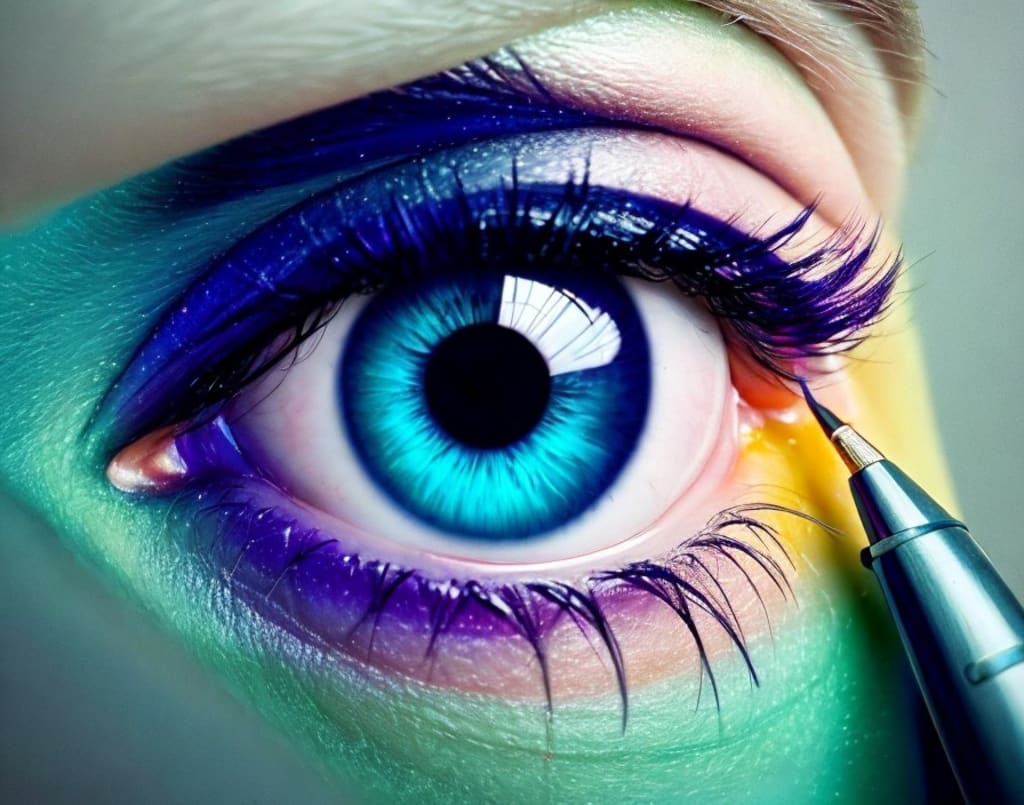The Marvel of Sight: From Light to Perception in a Blink
From Blurry to Brilliant: Addressing Common Vision Problems

The Marvel of Sight: From Light to Perception in a Blink
Imagine being able to navigate your world, appreciate the beauty of a sunset, or recognize a loved one's face – all thanks to the remarkable feat of human vision. While we often take sight for granted, it's a complex and fascinating process honed by millions of years of evolution. This article delves into the intricate workings of the eye, exploring how light transforms into the vibrant world we perceive. We'll also explore some of the most common vision problems and how to safeguard this precious gift.
A Symphony of Light: How Our Eyes Capture the World
Our journey of sight begins with an external stimulus – light. This light first encounters the cornea, the transparent dome at the front of the eye. The cornea acts like a natural lens, bending the incoming light rays and helping to focus them.
Just behind the cornea lies the pupil, the dark circular opening that controls the amount of light entering the eye. Think of it as the adjustable aperture of a camera. The colored part surrounding the pupil, the iris, acts like a muscular curtain. It constricts in bright light to limit the amount of light entering, and dilates in dim light to allow more in. This remarkable adaptation ensures we can see clearly in a wide range of lighting conditions.
Once light passes through the pupil, it reaches the lens, a transparent structure located behind the iris. The lens works in tandem with the cornea to precisely focus the light rays onto a specific area at the back of the eye called the retina.
The retina is a light-sensitive layer containing millions of specialized cells called photoreceptors. These cells come in two main types: rods and cones. Rods are highly sensitive to light and allow us to see in low-light conditions, while cones are responsible for color vision and provide us with sharp, detailed central vision. The fovea, a tiny area within the retina, is densely packed with cones, enabling us to see fine details and vibrant colors with exceptional clarity – perfect for activities like reading or recognizing faces.
Finally, the magic happens! The photoreceptor cells in the retina convert the captured light energy into electrical signals. These electrical signals travel along the optic nerve, a bundle of nerve fibers that connects the eye to the brain. The brain then interprets these signals, creating the visual world we experience.
The Spectrum of Color: Why We See a Rainbow, Not Just Light
One of the most captivating aspects of sight is our ability to perceive color. Humans have trichromatic vision, meaning our eyes have three types of cone cells – each sensitive to a specific range of light wavelengths. These cones are packed with pigments that respond to red, green, and blue light. When light strikes these pigments, the brain interprets the combination of signals to create the vast spectrum of colors we see. This remarkable ability is thought to have evolved to help our ancestors distinguish between ripe fruit, young leaves, and other visually similar objects that were crucial for survival.
Safeguarding Your Sight: Common Vision Problems and Solutions
While our eyes are marvels of engineering, vision problems can affect people of all ages. Here's a look at some of the most common issues and potential solutions:
- Refractive Errors: These are the most common vision problems, affecting nearly everyone at some point in life. They occur when the shape of the eye prevents light from focusing properly on the retina. Myopia (nearsightedness) makes distant objects blurry, while hyperopia (farsightedness) makes close objects appear fuzzy. Astigmatism causes distorted vision at all distances. Fortunately, refractive errors can be easily corrected with eyeglasses, contact lenses, or even laser vision correction surgery like LASIK.
- Age-Related Macular Degeneration (AMD): This is a leading cause of vision loss in older adults. It affects the macula, the central part of the retina responsible for sharp central vision. Early symptoms include difficulty seeing fine details and blurred central vision. While there's no cure for AMD, there are treatments available to slow its progression and maintain functional vision, such as nutritional supplements and anti-VEGF injections.
- Digital Eye Strain: In our increasingly digital world, spending excessive time staring at screens can lead to digital eye strain. Symptoms include dry eyes, headaches, blurred vision, and neck pain. Practicing the 20-20-20 rule (every 20 minutes, look at something 20 feet away for 20 seconds) and using blue light filters on devices can help alleviate discomfort and protect your eyes.
- Cataracts: Cataracts are a clouding of the lens, which normally allows light to pass through clearly. This cloudiness can cause blurred vision, faded colors, and difficulty seeing in low light. Fortunately, cataract surgery is a safe and effective outpatient procedure that replaces the clouded lens with a clear artificial lens, restoring vision.
Early detection and treatment are crucial for managing vision problems and preventing vision loss. Regular eye exams are essential, especially as we age. These exams allow ophthalmologists or optometrists to detect potential issues early on, when they are often more easily managed. Additionally, adopting healthy lifestyle habits can significantly contribute to eye health. This includes maintaining a balanced diet rich in fruits, vegetables, and omega-3 fatty acids, which are essential for eye health. Quitting smoking and protecting your eyes from ultraviolet (UV) rays with sunglasses that block UVA and UVB rays are also important steps you can take to safeguard your precious sight. By prioritizing regular eye care and incorporating healthy habits into your daily routine, you can empower yourself to see the world clearly for years to come.
About the Creator
suren arju
Hi there! I'm Suren, your startup guide. Entrepreneur, writer, dreamer - I share insights, tips & stories to fuel your startup journey. Ready to explore, learn & win together? Join me & let's redefine how we launch, learn & leap!
Enjoyed the story? Support the Creator.
Subscribe for free to receive all their stories in your feed. You could also pledge your support or give them a one-off tip, letting them know you appreciate their work.





Comments
There are no comments for this story
Be the first to respond and start the conversation.